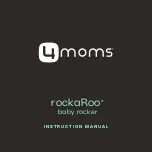
Technical Manual
Airbridge BTS3606A CDMA Base Station
System Description
Chapter 4 Main Functions
4-6
The MS uses random access protocol to initiate access procedure. Regarding
each supported paging channel, thirty-two access channels can be supported at
most.
l
Reverse Enhanced Access Channel (R-EACH)
The MS uses this channel to initiate the communication with the BTS or respond to
dedicated paging channel message.
The Reverse Dedicated Channel is further divided into:
l
Reverse Fundamental Channel (R-FCH)
It carries the traffic information between the MS and the BTS.
l
Reverse Dedicated Control Channel (R-DCCH)
It carries traffic information and signaling information between the MS and the
BTS.
l
Reverse Supplemental Channel (R-SCH)
It carries the traffic information between the MS and the BTS. It is applicable to
RC3 and RC4 only.
4.4.2 CDMA2000 1xEV-DO Channel
The following shows the classification of the CDMA2000 1xEV-DO channel.
I. Forward channel
The forward channel of the 1xEV-DO adopts Time Division Multiplex (TDM) mode.
It includes four types of channels: Pilot Channel, Media Access Control (MAC) Channel,
Control Channel, and Traffic Channel.
l
Pilot Channel
Different from the continuous pilot of IS-95/1x system, the Pilot Channel is only
transmitted on the activated forward channels in the 1xEV-DO system.
Pilot Channel is the unmodulated signal used for synchronization of ATs under the
coverage of the sector and other functions.
l
MAC Channel
There are three code sub-channels under the MAC Channel:
--Reverse Activity (RA) sub-channel, used for the reverse overload control of the
Um interface.
--Reverse Power Control (RPC) sub-channel, used for reverse power control.
--Data Rate Control Lock (DRCLock) sub-channel, used by the AN to inform the
AT whether the DRC channel of the AT can be properly demodulated. It plays an
important role in helping the AT with the forward virtual handoff.
l
Control Channel
















































